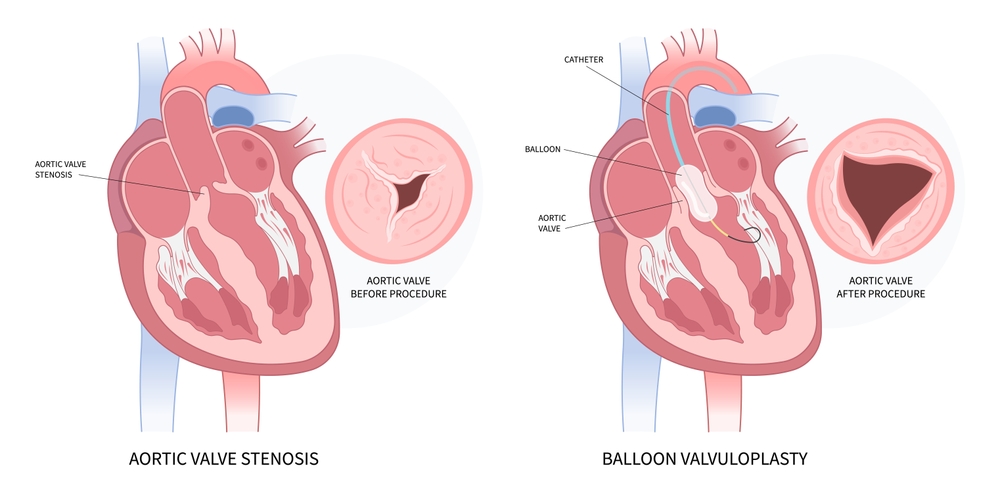
Balloon Aortic Valvuloplasty (BAV) is a minimally invasive procedure aimed at improving blood flow through a narrowed aortic valve, a condition known as aortic stenosis. This guide provides an overview of BAV, its indications, the procedure itself, benefits, potential risks, and what patients can expect during recovery.
What Is Aortic Stenosis?
Aortic stenosis occurs when the aortic valve’s leaflets become thickened or stiff, leading to a narrowed valve opening. This narrowing restricts blood flow from the heart to the rest of the body, causing symptoms like chest pain, fatigue, shortness of breath, and dizziness. Severe aortic stenosis can significantly impact daily activities and overall quality of life.
Indications for Balloon Aortic Valvuloplasty
BAV is typically recommended for patients who:
- Have severe aortic stenosis with significant symptoms and are not candidates for surgical or transcatheter aortic valve replacement
- Require temporary relief from symptoms as a bridge to more definitive treatments.
- Need urgent non-cardiac surgery and have severe aortic stenosis, where BAV can reduce surgical risks.
It’s important to note that while BAV can alleviate symptoms, the valve may narrow again over time, necessitating further interventions.
The Balloon Aortic Valvuloplasty Procedure

During BAV:
- Preparation: The patient is admitted to the hospital, and pre-procedure assessments are conducted, including medical history review and imaging studies.
- Anesthesia: Local anesthesia is administered at the catheter insertion site, usually in the groin area.
- Catheter Insertion: A thin, flexible tube (catheter) with a deflated balloon at its tip is threaded through a blood vessel to the narrowed aortic valve.
- Balloon Inflation: Once positioned, the balloon is inflated to stretch the valve opening, improving blood flow.
- Completion: The balloon is deflated and removed, and the catheter is withdrawn. The procedure typically takes about 30 to 60 minutes.
Benefits of Balloon Aortic Valvuloplasty
BAV offers several advantages:
- Symptom relief, including reduced chest pain and improved breathing.
- Enhanced quality of life and increased ability to perform daily activities.
- A less invasive alternative to open-heart surgery, with a shorter hospital stay and recovery period.
Potential Risks and Considerations
While BAV is generally safe, potential risks include:
- Bleeding or infection at the catheter insertion site.
- Blood vessel damage.
- Heart rhythm disturbances.
- Stroke or heart attack (rare).
Discussing these risks with your healthcare provider is crucial to make an informed decision.
Recovery and Follow-Up Care
Post-procedure care involves:
- Monitoring in the hospital for a short period, often overnight.
- Gradual resumption of normal activities as advised by your doctor.
- Regular follow-up appointments to assess valve function and determine if additional treatments are needed.
Adopting a heart-healthy lifestyle, including a balanced diet, regular exercise, and medication adherence, is essential for optimal outcomes.
Conclusion
Balloon Aortic Valvuloplasty is a valuable procedure for patients with severe aortic stenosis who are not candidates for valve replacement surgery. By understanding the procedure, its benefits, and potential risks, patients can work closely with their healthcare team to manage their heart health effectively.


